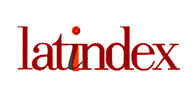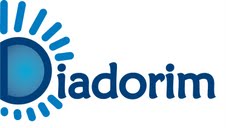OS BENEFÍCIOS DO LASER DE BAIXA POTÊNCIA NA ONCOLOGIA
DOI:
https://doi.org/10.13037/rbcs.vol11n37.1967Palavras-chave:
Mucosite, Quimioterapia, Radioterapia, Terapia a Laser de Baixa Intensidade,Resumo
Introdução: A radioterapia e a quimioterapia são os tratamentos de eleição para as neoplasias da cabeça e pescoço. A mucosite oral é uma complicação comum resultante de toxicidade de dose-limitante no tratamento com efeitos colaterais agudos observados no paciente com câncer. Objetivo: O presente estudo teve como objetivo descrever os principais benefícios do laser de baixa potência na oncologia, na prevenção e tratamento da mucosite radio e quimioinduzida. Materiais e métodos: Trata-se de um estudo descritivo, exploratório, quantitativo realizado através de revisão bibliográfica, no período de 1995-2011. Foram pesquisadas as bases de dados Lilacs (Literatura Latino-Americana e do Caribe em Ciências da Saúde) e Medline (Literaura Internacional em Ciências) e Scientific Electronic Library Online (SciELO). Resultados: Foram selecionados 61 artigos relevantes, dos quais, apenas 39 apresentavam evidências científicas sobre os benefícios do Laser na oncologia, 19 de revisão de literatura, 11 ensaio clínico, 6 relatos de caso. Conclusão: A Terapia a Laser de Baixa intensidade apresentou-se eficaz na prevenção e tratamento da mucosite oral, apresentando-se como um tratamento atraumático, de baixo custo e com bons resultados.
Downloads
Referências
1. Kelner N, Castro JFL. Laser de baixa intensidade no tratamento da mucosite oral induzida pela radioterapia. Rev Bras Cancerol. 2007; 53(1):29-33.
2. Rubenstein EB, Peterson DE, Schubert MM, Keefe D, McGuire D, Epstein J, Elting LS, Fox PC, Cooksley C, Sonis ST. Clinical practice guidelines for the prevention and treatment of cancer therapy-induced oral gastrointestinal mucositis. Cancer. 2004; 100(Suppl 9):S2026-46.
3. Jham BC, Freire ARS. Oral complications of radiotherapy in the head and neck. Rev Bras Otorrinolaringol. 2006; 72(5):704-8.
4. Sonis ST. A biological approach to mucositis. J Support Oncol. 2004; 2(1):21-36.
5. Bensadoun JR. Low level laser therapy (LLLT): A new paradigm in the management of cancer therapy-induced mucositis? Indian J Med Res. 2006 Oct; 124(4):375-8. Comment on: Indian J Med Res. 2006; 124(4):399-402.
6. Wijers OB, Levendag PC, Harms ER, Gan-Teng Am, Schmitz PI, Hendriks WD, Wilims EB, van der Est H, Visch LL. Mucositis reduction by selective elimination of oral fl ora in irradiated cancers of the head and neck: a placebocontrolled double-blind randomized study. Int J Radiat Oncol Biol Phys. 2001; 50(2):343-52.
7. Sonis ST. Mucositis as a biological process: a new hypothesis for the development of chemotherapy-induced stomatotoxicity. Oral Oncol. 1998; 34(1):39-43.
8. Peterson DE. New strategies for management of oral mucositis in cancer patients. J Support Oncol. 2006; 4(2 Suppl 1):9-13.
9. Rampini MP, Ferreira EMS, Ferreira CG, Antunes HS. Utilização da Terapia com Laser de Baixa Potência para a Prevenção da Mucosite Oral: Revisão de Literatura. Rev Bras Cancerol. 2009; 55(1):59-68.
10. Cardoso MFA, Novikoff S, Tresso A, Segreto RS, Cervantes O. Prevention and control of sequels in the mouth of patients treated with radiation therapy for head and neck tumors. Radiol Bras. 2005; 38(2):107-15.
11. Biron P, Sebban C, Gourmet R, Chvetzoff G, Philip I, Blay JY. Research controversies in management of oral mucositis. Support Care Cancer. 2000; 8(1):68-71.
12. Adamietz IA, Rahn R, Böttcher HD, Schäfer V, Reimer K, Fleischer W. Prophylaxis with povidone-iodine against induction of oral mucositis by radiochemotherapy. Support Care Cancer. 1998; 6(4):373-7.
13. Gomes DQC, Araújo AMM, Paiva MDEB, Costa LJ. Mucosite Oral Radioinduzida: Etiologia, Características Clínico-Histopatológicas, Complicações e Tratamento: [revisão]. Odontol Clín-Cient. 2009; 8(3):203-7.
14. Raber-Durlacher JE, Weijl NI, Saris MA, Koning B, Zwinderman AH, Osanto S. Oral mucositis in patients treated with chemotherapy for solid tumors: a restrospective analysis of 150 cases. Support Care Cancer. 2000; 8(5):366-71.
15. Scully C, Epstein J, Sonis S. Oral mucositis: a challenging complication of radiotherapy, chemotherapy, and radiochemotherapy. Part 2: diagnosis and management of mucositis. Head Neck. 2004; 26(1):77-84.
16. Sandow PL, Baughman RA. Dental and oral care for the head and neck cancer patient. In: Million RR, Cassisi NJ, editors. Management of head and neck cancer: a multidisciplinary approach. 2nd ed. Philadephia: Lippincott; 1994. cap. 10: 185-91.
17. Meraw SJ, Reeve CM. Dental considerations and treatment of the oncology patient receiving radiation therapy. J Am Dent Assoc. 1998; 129(2):201-5.
18. Pico JL, Avila-Garavito A, Naccache P. Mucositis: its occurrence, consequences and treatment in the oncology setting. Oncologist. 1998; 3(6):446-51.
19. Scully C, Epstein J, Sonis S. Oral mucositis: a challenging complication of radiotherapy, chemotherapy, and radiochemotherapy: part 1, pathogenesis and prophylaxis of mucositis. Head Neck. 2003; 25(12):1057-70.
20. Cowen D, Tardieu C, Schubert M, Peterson D, Resbeut M, Faucher C, Frankquin J. Low energy Helium-Neon laser in the prevention of oral mucositis in patientsundergoing bone marrow transplant: results of a double blind randomized trial. Int J Radiat Oncol Biol Phys. 1997; 38(4):697-703.
21. Volpato LER, Silva TC, Oliveira TM, Sakai VT, Machado MAAM. Mucosite Bucal Rádio e Quimioinduzida. Rev Bras Otorrinilaringol. 2007; 73(4):562-8.
22. Almeida FCS, Cazal C, Durazzo MD, Ferraz AR, Silva DP. Radioterapia em cabeça e pescoço: efeitos colaterais agudos e crônicos bucais. Rev Bras Patol Oral. 2004; 3(2):62-9.
23. Franceschini C, Jung JE, Amante CJ. Mucosite oral pósquimioterapia em pacientes submetidos à supressão de medula óssea. Rev Bras Patol Oral. 2003; 2(1):40-3.
24. Ingraci MBL, Lopes Neto FC, Padovani JA, Brachini OS, Nonato ER. Protocolo de abordagem terapêutica para a mucosite radioinduzida. Rev Bras Patol Oral. 2004; 3(4):208-10.
25. Lopes CO, Mas JRI, Zângaro RA. Prevenção da xerostomia e da mucosite oralinduzidas por radioterapia com uso do laser de baixa potência. Radiol Bras. 2006; 39(2):131-6.
26. Gomes IP, Camargo TC. Feridas tumorais e cuidado de enfermagem: buscando evidências para o controle de sintomas. Rev Enferm UERJ. 2004; 12:211-6.
27. Sonis ST. The pathobiology of mucositis. Nat Rev Cancer. 2004; 4(4):277-84.
28. Ribeiro MS, Zezell DM. Laser de baixa intensidade. In: Eduardo CP, Gutknecht N, editors. A Odontologia e o laser: atuação do laser na especialidade odontológica. Quintessence Editora Ltda; 2004. p. 217-40.
29.Genovese JW. Laser de baixa potência: aplicações terapêuticas em odontologia. São Paulo: Lovisa; 2000.
30. Sandoval RL, Koga DH, Buloto LS, Suzuki R, Dib LL. Management of chemo- and radiotherapy induced oral mucositis with low-energy laser: initial results of A.C. Camargo Hospital. J Appl Oral Sci. 2003; 11(4):337-41.
31. Chin EA. A brief overview of the oral complications in pediatric oncology patients and suggested management strategies. ASD J Dent Child. 1998; 65(6):468-73.
32. Epstein JB, Gorsky M, Guglietta A, Le N, Sonis ST. The correlation between epidermal growth factor levels in saliva and the severity of oral mucositis during oropharingeal radiation therapy. Cancer. 2000; 89(11):2258-65.
33. Plevová P. Prevention and treatment of chemotherapy and radiotherapy-induced oral mucositis: a review. Oral Oncol. 1999; 35(5):453-70.
34. Scully C, Epstein JB. Oral health care for the cancer patient. Eur J Cancer Part B, Oral Oncol. 1996; 32(5):281-92.
35. Bensadoun RJ, Franquin JC, Ciais G, Darcorurt V, Schubert MM, Viot M, Dejou J, Tardieu C, Benezery K, Nguyen TD, Laudoyer Y, Dassonville O, Poissonnet G,Vallicioni J, Thyss
A, Hamdi M, Chauvel P, Demard F. Low-energy He-Ne laser in the prevention of radiation-induced mucositis: a multicenter phase III randomized study in patients with head and neck cancer. Support Care Cancer. 1999;7(4):244-52. Comment in: Support Care Cancer. 1999; 7(4):217-8.
36. Barasch A, Peterson DE, Tanzer JM, D'Ambrosio JA, Nuki K, Schubert MM, Franquin JC, Clive J, Tutschka P. Helio-neon laser effects on conditioning-induced oral mucositis in bone marrow transplantation patients. Cancer. 1995; 76(12):2550-6.
37. Cruz LB, Ribeiro AS, Rech A, Rosa LGN, Castro CG Jr, Bruneto AL. Influence of low-energy laser in the prevention of oral mucositis in children with cancer receiving chemotherapy. Pediatr Blood Cancer. 2007; 48(4):435-40.
38. Savarese DMF, Savy G, Vahdat L, Wischmeyer PE, Corey B. Prevention of chemotherapy and radiation toxicity with glutamine. Cancer Treat Rev. 2003; 29(6):501-13.
39 Catão MH. Avaliação da eficácia do Laser Arseneto de Gálio e Alumínio l=830 nm no controle da radiomucosite [dissertation]. Salvador: Universidade Federal da Paraíba/ Universidade Federal da Bahia; 2004. Portuguese.
40. Lima AG, Antequera R, Peres MPSM, Snitcosky IML, Federico MHH, Villar RO. Efficacy of Low-Level Laser Therapy and Aluminum Hydroxide in Patients with Chemotherapy and Radiotherapy-Induced Oral Mucositis. Braz Dent J. 2010; 21(3):186-92.
41. Lino MD, Carvalho FB, Oliveira LR, Magalhães EB, Pinheiro AL, Ramalho LM. Laser Phototherapy as a Treatment for Radiotherapy-Induced Oral Mucositis. Braz Dent J. 2011; 22(2):162-5.
42. Silva FL Jr, Gordón-Nunez MA, Galvão HC, Costa EMMB. Mucosite Oral Induzida por Radiação: Uso de Fatores de Crescimento e de Laser. Rev Gaúcha Odontol. 2010; 4(58):511-4.
Downloads
Publicado
Edição
Seção
Licença
Direitos autorais (c) 2014 Ayonara Dayane Leal da Silva

Este trabalho está licenciado sob uma licença Creative Commons Attribution-NonCommercial-NoDerivatives 4.0 International License.
Proposta de Política para Periódicos que oferecem Acesso Livre Adiado
Autores que publicam nesta revista concordam com os seguintes termos:
- Autores mantém os direitos autorais e concedem à revista o direito de primeira publicação, com o trabalho licenciado simultaneamente sob uma licença
https://creativecommons.org/licenses/by-nc-nd/4.0/, permitindo o compartilhamento do trabalho com reconhecimento da autoria do trabalho e publicação inicial nesta revista.
- Autores têm autorização para assumir contratos adicionais separadamente, para distribuição não-exclusiva da versão do trabalho publicada nesta revista (ex.: publicar em repositório institucional ou como capítulo de livro), com reconhecimento de autoria e publicação inicial nesta revista.
- Autores têm permissão e são estimulados a publicar e distribuir seu trabalho online (ex.: em repositórios institucionais ou na sua página pessoal) a qualquer ponto antes ou durante o processo editorial, já que isso pode gerar alterações produtivas, bem como aumentar o impacto e a citação do trabalho publicado (Veja O Efeito do Acesso Livre).









